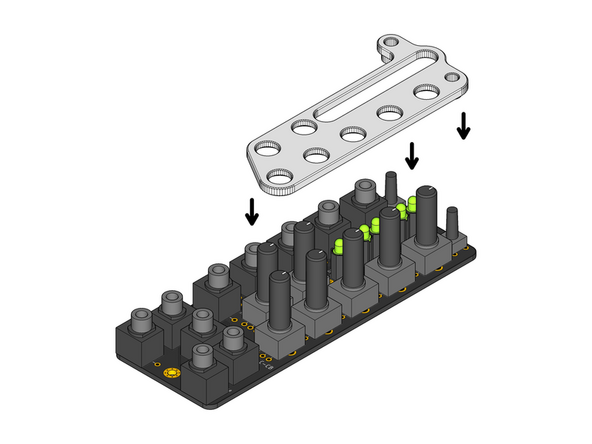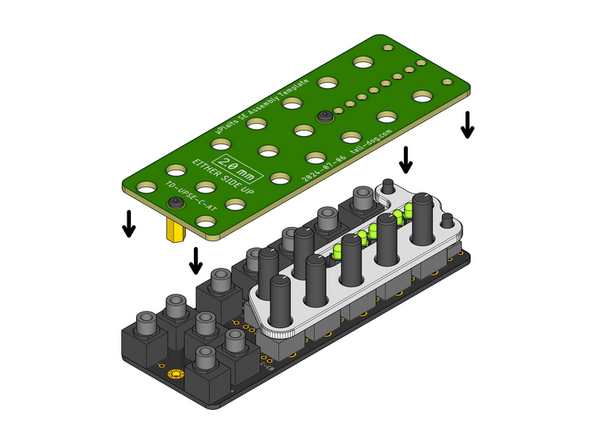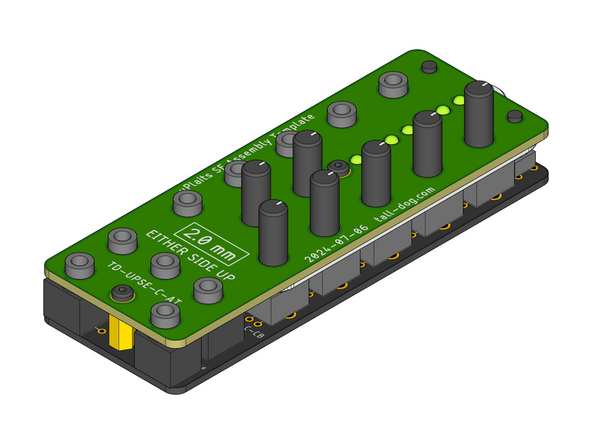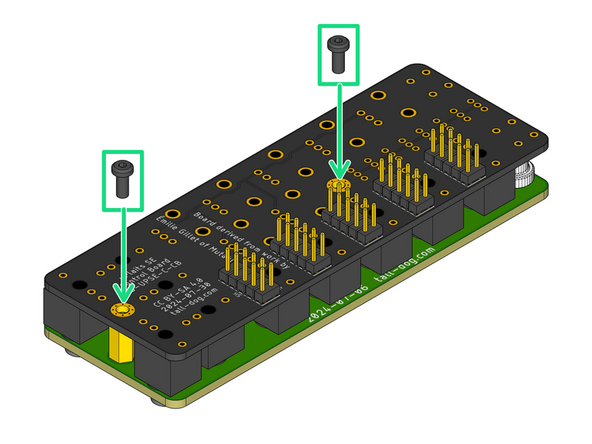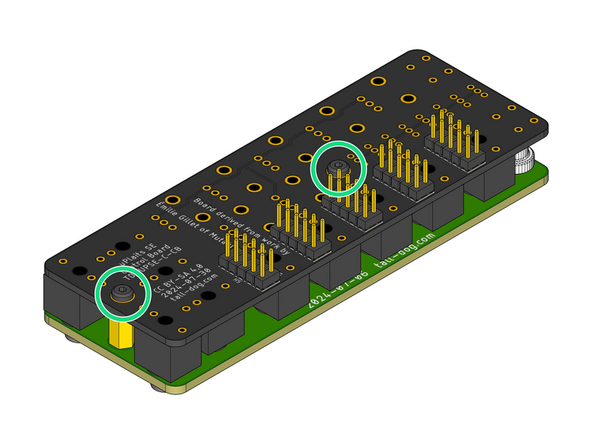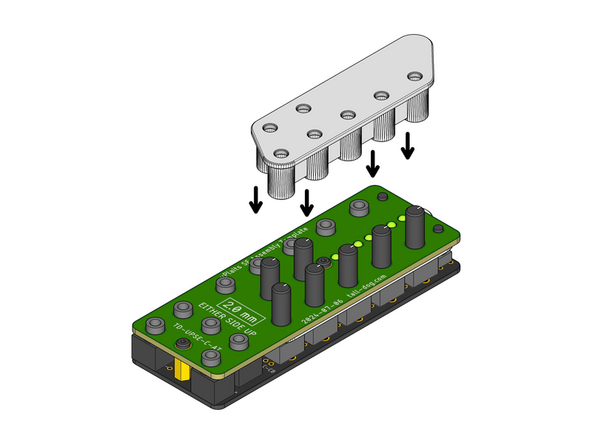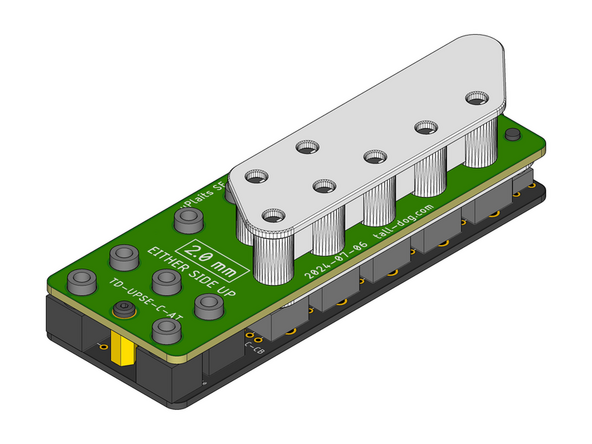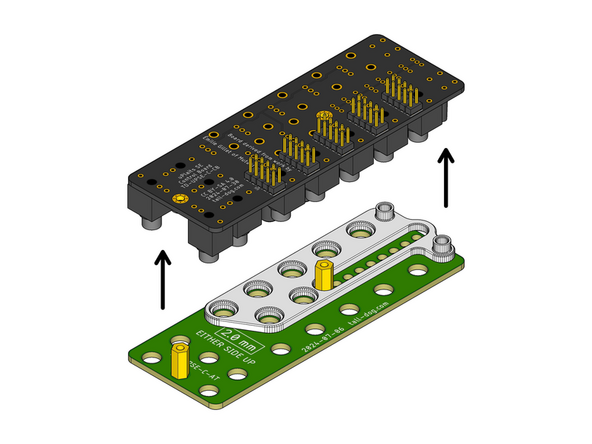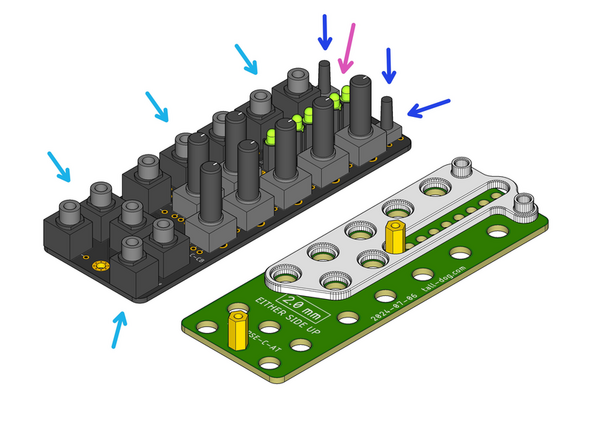-
-
This step only needs to be done once. The standoffs can remain attached to the template permanently for subsequent iterations.
-
Identify the green Assembly Template. It has the part number TD-UPSE-C-AT printed on it.
-
The orientation of the board doesn't matter since both sides are the same.
-
Locate two M2.5 × 10 mm female standoffs.
-
Secure each standoff using one M2.5 × 6 mm pan head machine screw in each of the two locations shown.
-
Flip over the completed Assembly Template. It is now ready to be used.
-
-
-
Identify the bare Control Board PCB. It has part number TD-UPSE-C-CB printed on its bottom side.
-
For ease of access to the solder pads, place and solder the five through-hole components H1-5 before continuing this process.
-
Do not solder any of the following components yet.
-
Place eight LED components D1-8 onto an LED spacer.
-
Place the combined spacer and LEDs onto the Control Board.
-
-
-
Place all of the remaining components onto the Control Board:
-
Place the ten jack components J1-10.
-
Place the two button components S1 and S2.
-
Place the three center-detent potentiometer components P4, P6, and P7.
-
Place the four other regular potentiometer components P1, P2, P3, and P5.
-
-
-
Locate the white plastic Assembly Spacer part.
-
Make sure that the flat side of the Assembly Spacer is facing up when orienting it relative to the Control Board.
-
Position the Assembly Spacer above the 17 components P1-7, S1-2, and D1-8 and slide it down over them.
-
The Assembly Spacer should rest on top of all components with no gaps. All component shafts should be extending upwards through the Assembly Spacer as shown.
-
-
-
Position the prepared Assembly Template above the Control Board as shown.
-
Gently slide the Assembly Template down over all the loose components and the Assembly Spacer.
-
The Assembly Template may have to be gently wiggled in order to ensure that it is fully seated on all of the components underneath it. Both of the metal standoffs should sit flush against the top surface of the Control Board below.
-
Verify that all components are seated correctly and are sticking out through the top surface of the Assembly Template as shown.
-
-
-
Grip the pair of boards and flip them over while applying slight pressure, holding them together so that none of the components become unseated.
-
Locate and fasten two M2.5 × 6 mm pan head machine screws to secure the Assembly Template to the Control Board, sandwiching all of the loose components and the Assembly Spacer solidly in-between them.
-
-
-
Locate the white plastic Assembly Cap part.
-
Make sure that the flat side of the Assembly Cap is facing up when orienting it relative to the top surface of the Control Board as shown.
-
Position the Assembly Cap above the 15 components P1-7 and D1-8 and slide it down onto them.
-
The Assembly Cap should rest flush up against the Assembly Template with no gaps between them.
-
Now solder all of the loose through-hole components in place. There are a total of 27 components with 97 solder joints.
-
-
-
Separate the Control Board from the Assembly Cap by applying gentle pressure.
-
Put the Assembly Cap aside for use on the next iteration.
-
-
-
Remove the two M2.5 × 6 mm pan head machine screws from the Control Board side of the assembly and put them aside for the next iteration.
-
Gently lift the Control Board away from the Assembly Template and the Assembly Spacer. They should both slide off easily without applying much force.
-
Inspect the Control Board assembly and verify that all of the following statements are true:
-
There are no gaps between the plastic bases of components J1-10 and the top surface of the Control Board.
-
The shafts of components P1-7 and S1-2 rise perpendicularly (at a 90º angle) compared to the top surface of the Control Board.
-
The LED components D1-8 are sitting flush within the LED Spacer and there are no gaps above or below it.
-
This completes the process.
-
Leave the two standoffs attached to the Assembly Template and skip Step 1 on the next iteration of this process.
-
Almost done!
Finish Line








